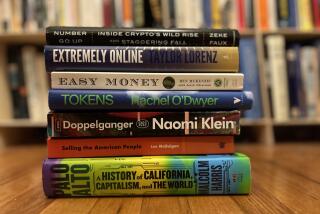The Final Frontier
Acentury ago, Frederick Jackson Turner delivered an address on “The Significance of the Frontier in American History” that changed the way America understood itself. Turner cast the frontier’s history in a new light, making it a driver of national history and culture and its closing a cause for alarm.
Lawrence Lessig’s “The Future of Ideas” should have been titled “The Significance of the Electronic Frontier in American History.” Lessig sees the Internet as harboring a unique character that accounts for its importance and for which it is under attack. Like Turner’s “frontier thesis,” “The Future of Ideas” is a dazzlingly inventive work about familiar things. It deserves to change the way we think about the electronic frontier.
In Lessig’s world, established corporations use any means to keep challengers down, including rewriting the rules and even outlawing disruptive innovation. But Lessig sees the Internet as a realm where the right to innovate (the term Microsoft used to brand its defense in the federal antitrust suit) has been built-in, much as constitutional rights are guaranteed to citizens.
It isn’t obvious that the Internet should have become such a hotbed of creativity. For years, the phone system was far more attractive than the Internet to hackers like Apple co-founder Steve Wozniak. So why did the Internet become an arena for innovation in the 1990s? Not because it attracted venture capitalists and twentysomething CEOs who “got it,” but because it is a “commons.”
Commons, Lessig explains, are things available to anyone who obeys the rules governing their use. Streets, highways and parks are commons open to everyone. The Internet’s fundamental design was built around a common protocol that all computers could use, and it was designed so that the intelligence resided at the edges of the network, not in the center. This “end-to-end” architecture is the reverse of the telephone system, in which dumb devices--your phone--are connected by an intelligent network. Add the development of open source software and you have a commons of extraordinary value. Anyone who obeys the technical rules can develop services that run on it. No application can be excluded for political reasons or protectionism. Success is bestowed by the marketplace, not by government policy or corporate patronage. The phone system couldn’t compete, not despite its centralized power, but because of it. To paraphrase Stewart Brand, innovation wants to be free.
But the Internet is endangered, Lessig says. The shift from an Internet running off telecom to broadband running through cable television wires threatens the open architecture because a cable company can design its system to work best with its own service provider, deny access to competitors or break software from other companies, and it will all be legal; no phone company could have ever done those things.
Changes in copyright and patent law are also impoverishing the intellectual commons. Copyright originally lasted 14 years; today it can last 10 times as long, thanks to efforts by entertainment companies eager to defend their profits. Patent applicants have to reveal how their inventions work, but you can patent software without revealing the source code that would make it comprehensible to others, and the “fair use” of copyrighted materials is under attack as publishers develop technology to gain more control over content.
All of these developments are part of a bigger story about the changing values of ideas and property rights. Museums have jumped into the deep waters of the marketplace, in search of new riches or replacement for lost funding. Even universities have mutated from dreamy spires into incubators of companies and products, thanks to federal rules allowing them to commercialize discoveries made with government funds. Corporations patent plants and animals, and copyright genetic codes.
“The Future of Ideas” concludes with proposals to defend the digital commons. Given that we live in a world in which intellectual work is being fenced off and sold, do his ideas stand a chance? Lessig is pessimistic, but the last 20 years have seen some remarkable experiments in public policy inspired by iconoclastic thinkers. His ideas could provide a foundation for real action. Recent polls suggest that respect for the government and public services is rising, and few politicians would say they were against innovation and for special interests. It might be impossible to recover America’s original great commons, the first frontier, but perhaps the electronic one still has a chance.
*
Alex Soojung-Kim Pang is a researcher at the Institute for the Future, a Silicon Valley think tank.






